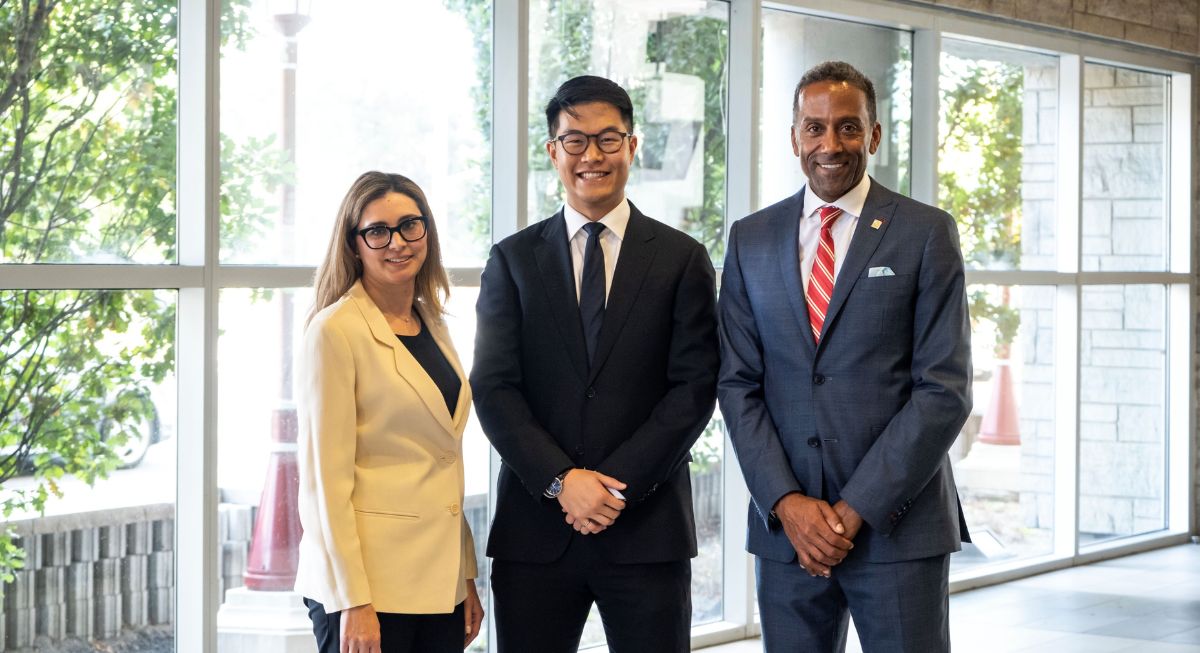Measuring investor risk tolerance plays a central role in the investment industry, but finance professionals still rely on inefficient and narrow approaches to understand their clients’ investment preferences. Telfer Professor Jonathan Li has addressed some of these limitations by proposing an analytics-driven model to calculate investment preference.
Finding the right method to measure one’s risk tolerance is relevant to everyone in the investment industry, from major corporations to clients interested in investing in their retirement fund or children’s education. Financial advisors and professionals are committed to offering the best investment recommendations that will bring the highest return for their clients, but they often fail to see the whole picture of what the client really prefers.
“Failure to properly assess risk preference can lead clients to believe that their investments are safe and to take more risk than they can afford,” says Jonathan Li, an associate professor at the Telfer School of Management. In extreme cases, “black-swan” events can tank the market: “many people can lose their funds if invested in overly risky assets,” he adds.
Drawing on analytics research to identify practical solutions
Novel finance research suggests that convex risk function theory can help professionals more accurately measure their investors’ tolerance for risk. Despite its theoretical appeal, putting convex risk function into practice can be challenging. “There’s little guidance around how to choose a convex risk function that appropriately represents one’s subjective risk preference,” explains Li.
But Professor Li was able to do just that by developing an analytics model that determines a client’s risk preference. His model accounts for a client’s feedback, past investments, and a company’s market performance history, allowing finance professionals to better understand their clients’ risk preferences and provide recommendations that are more in tune with those preferences. Li shared his findings in a new study published in Management Science.
Challenges of using traditional ways to measure investment preferences
Financial professionals such as bank advisors often ask their clients an extensive list of questions to determine which investments they prefer, but this traditional approach is time-consuming. It also fails to account for a very elusive concept: preference is a subjective experience for both clients and financial advisors. Clients may not fully grasp their own preferences when choosing their investments and determining how much they are willing to risk. Finance advisors may be biased in how they phrase their questions. Some of these professionals overestimate their clients’ tolerance for risk.
“Through traditional methods, financial advisors have access to a limited range of information, so their traditional way of quantifying individual risk intolerance can lead clients to make high-risk decisions that do not necessarily reflect their preferences,” says Li. These methods are also too narrow to reflect the complexity of an ever-changing market environment.
Applications for investors and finance professionals
Professor Li believes that finance professionals should help clients better understand and capture the full picture of their preferred investment choices. To do so, professionals would need to gather information about the past market performance of those companies that match their client’s profile, weigh in their clients’ past investments and risk exposure, and compare how these possible investment choices would perform in the market.
The more data an investment professional has about the client’s past investment decisions, the closer they are to developing an investment plan that suits the client’s preferences. Gaining access to high quality data also means this approach could transform the investment sector. Li’s model involves AI and machine learning techniques that allow computers to learn an investor’s preference and design more effective decision-making tools for advisors.
Analytics-driven model has financial benefits for society
Li’s novel, analytics-driven model can help ensure that any investment decisions are made within the clients’ tolerance for risk. The model can also improve economic stability by benefiting the following investment industry stakeholders:
Investors: the model can help clients hold their financial advisors and institutions accountable for identifying investment opportunities that reflect their own preferences
Finance professionals: this framework helps financial advisors better understand their clients’ past investment decisions and define an investment plan that aligns with their investment preferences. Such a framework will also ensure that these professionals don’t deviate from their client’s choices.
Fund management companies: the model helps these companies ensure that they do not take on more risk than their clients can accept.
Read the article:
Li, J.Y. 2021. “Inverse optimization of convex risk functions.” Management Science.

Jonathan Li's research interests focus on business analytics, operations research, and financial engineering. At the centre of his work are risk management problems that involve quantifying and modelling risk. Learn more about Li's work.

-zhang.png)









